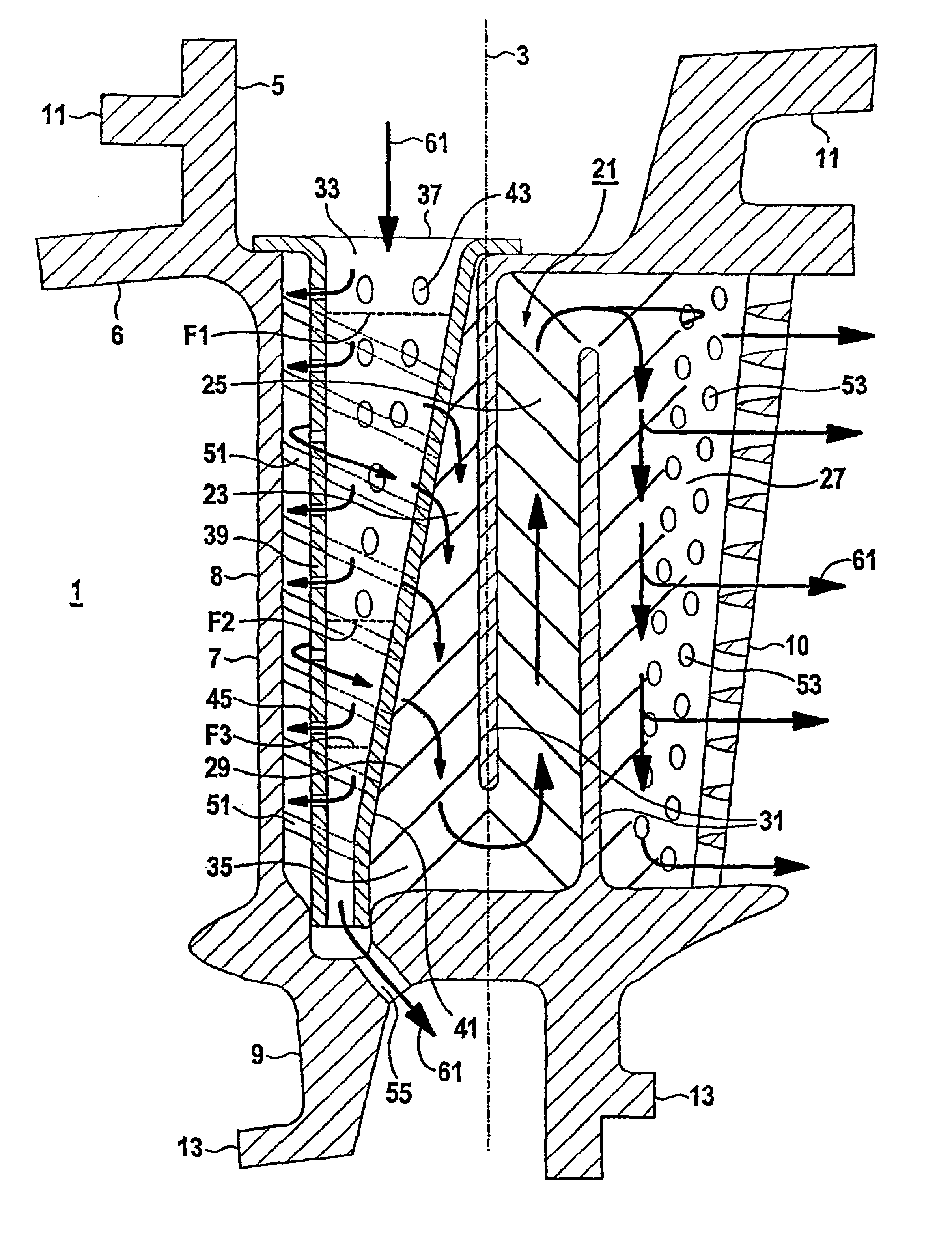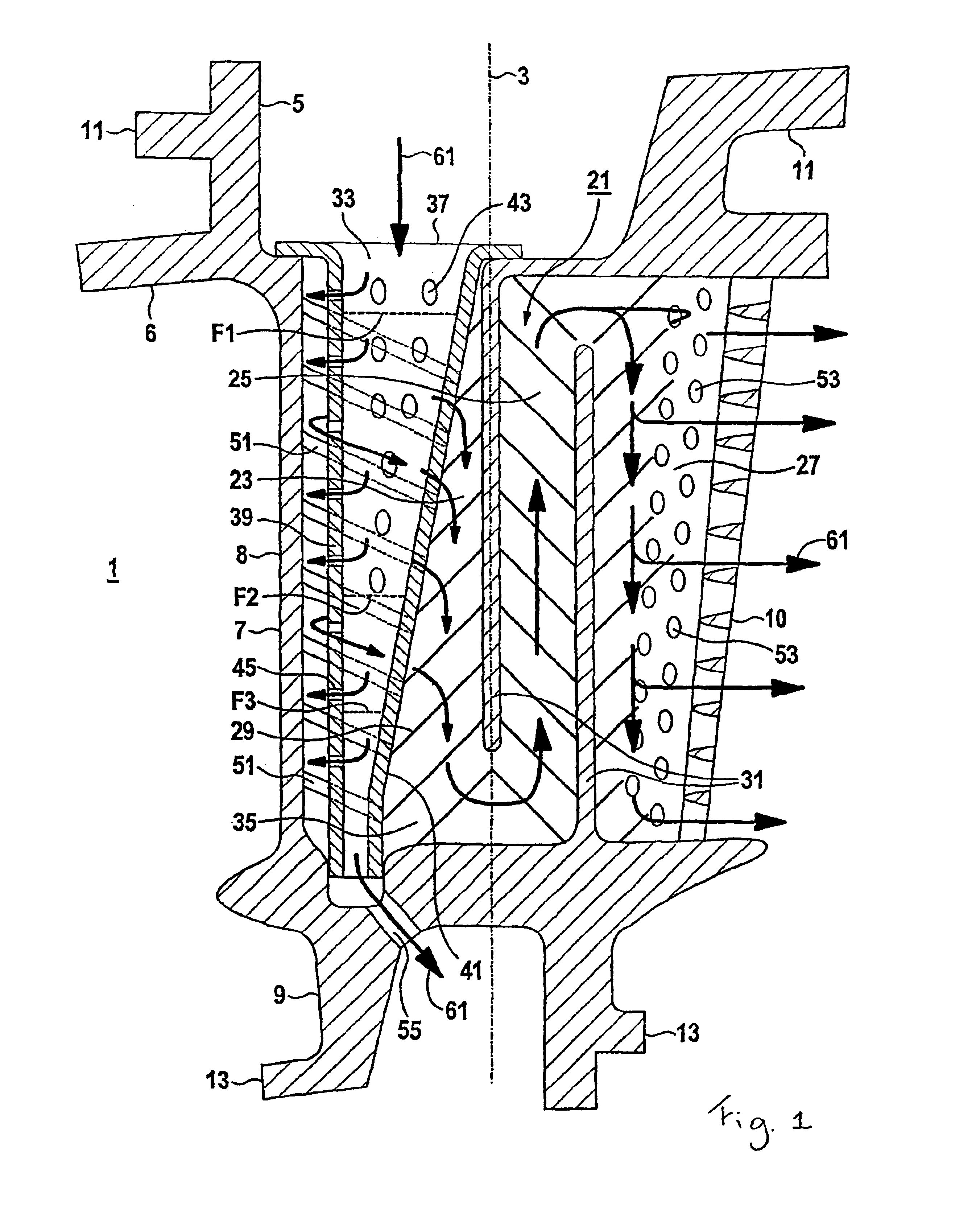Gas turbine blade
a gas turbine blade and blade technology, applied in the direction of machines/engines, stators, liquid fuel engines, etc., can solve the problems of insufficient cooling of the airfoil leading edge in order to sufficiently reduce the temperature of the airfoil leading edge, insufficient cooling of the airfoil overall by the impingement cooling insert, etc., to achieve a lower consumption of cooling fluid for the cooling the effect of reducing the efficiency of the inner ring cooling
- Summary
- Abstract
- Description
- Claims
- Application Information
AI Technical Summary
Benefits of technology
Problems solved by technology
Method used
Image
Examples
Embodiment Construction
The gas turbine guide blade 1 is directed along a blade axis 3. Along the blade axis 3, the gas turbine blade 1 has, following one another, a fastening region 5, a platform region 6, an airfoil region 7 and an inner ring 9. The airfoil region 7 has an airfoil leading edge 8 and an airfoil trailing edge 10. The fastening region 5 has a hook 11 for hooking the gas turbine blade 1 in a casing (not shown) of a gas turbine. The inner ring 9 has steps 13 for engaging in a sealing system for sealing off a hot-gas duct (not shown) of a gas turbine relative to a rotor (likewise not shown) of the gas turbine. The gas turbine blade 1 is of hollow design. An internal cooling system of the gas turbine blade 1 is explained in more detail below:
A meandering cooling passage 21 leads through the interior of the gas turbine blade 1. The meandering cooling passage 21 is composed of sections 23, 25, 27 directed along the blade axis 3. These sections 23, 25, 27 are separated from one another by ribs 31....
PUM
 Login to View More
Login to View More Abstract
Description
Claims
Application Information
 Login to View More
Login to View More - R&D
- Intellectual Property
- Life Sciences
- Materials
- Tech Scout
- Unparalleled Data Quality
- Higher Quality Content
- 60% Fewer Hallucinations
Browse by: Latest US Patents, China's latest patents, Technical Efficacy Thesaurus, Application Domain, Technology Topic, Popular Technical Reports.
© 2025 PatSnap. All rights reserved.Legal|Privacy policy|Modern Slavery Act Transparency Statement|Sitemap|About US| Contact US: help@patsnap.com


